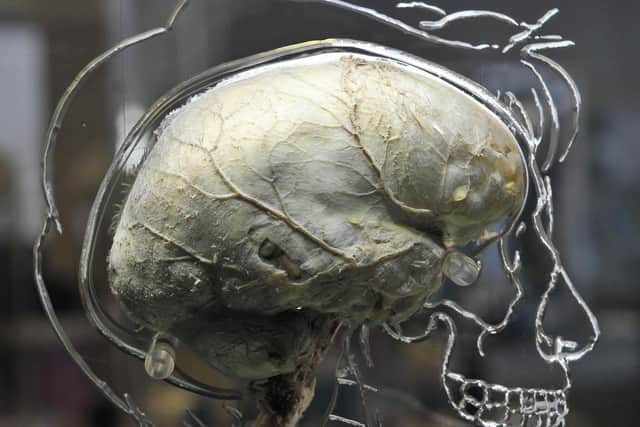Some steroids 'may change brain structure, study finds
Some type of commonly prescribed steroids could lead to changes in the structure of the brain, researchers have claimed.
Prolonged use of systemic glucocorticoids - widely used to treat autoimmune and inflammatory skin diseases - have previously been linked to potential side effects in the long-term.
Advertisement
Hide AdAdvertisement
Hide AdBut the researchers said any studies on the impacts of glucocorticoids on the brain have been small.


They set out to examine the impact of systemic glucocorticoids and inhaled glucocorticoids - such as inhalers - on the brain by assessing differences in grey matter volume and the white matter microstructure in users compared to non-users.
The team, led by academics at the University Medical Centre in Leiden, Netherlands, examined data on 222 systemic glucocorticoid users, 557 inhaled glucocorticoid users and 24,106 matched people for comparison.
All participants were drawn from the UK BioBank study.
Experts examined MRI scans of the brain on both those taking the drugs and those who were not.
They found that both systemic and inhaled glucocorticoid use were associated with "reduced white matter integrity" compared with those who did not take the drugs.
The effects were greater in systemic users than in users of inhaled steroids.
They also found changes to grey matter in the brain among users.
The study, published in the journal BMJ Open, said systemic use was associated with larger grey matter volume in the caudate structure in the brain, while inhaled users had smaller amygdala grey matter volume.
Advertisement
Hide AdAdvertisement
Hide AdSystemic users were also more likely to self report symptoms of depression, disinterest, restlessness and tiredness compared to the control group.
Inhaled users only reported more tiredness and lethargy compared to the controls.
"This study shows that in the large population-based cohort of the UK Biobank, the use of not only systemic glucocorticoids but also inhaled glucocorticoids is associated with changes in several brain imaging parameters," the authors wrote.
"Most notably, the previously reported glucocorticoid effects on white matter microstructure were also detected in this population and are therefore likely to be widespread among glucocorticoid users."
They added: "While it remains unclear whether the observed effect sizes have clinical consequences for the population of glucocorticoid users as a whole, these findings are remarkable given the common neuropsychiatric side effects of synthetic glucocorticoids, and the observed changes may play a role in those patients suffering from these side effects."
Comments
Want to join the conversation? Please or to comment on this article.